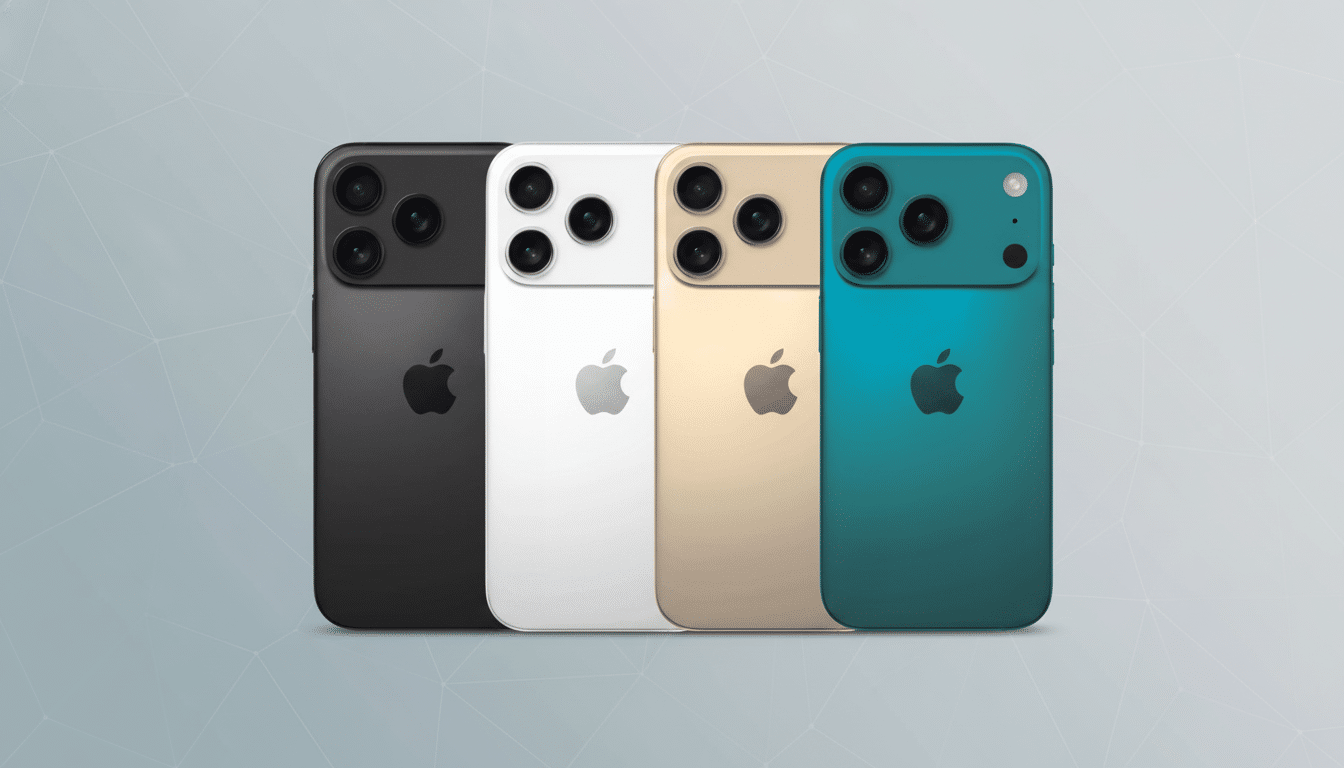Apple’s new crop falls neatly into four options: iPhone 17 ($799), iPhone Air ($999), iPhone 17 Pro ($1,099), and iPhone 17 Pro Max ($1,199). They’re closer on paper than they’ve ever been. In reality, what the best pick for you is will depend on which of these factors you tend to value most: thinness, performance, cameras, screen size or battery life.
Reality check before we get started: Most people do not need a Pro. And it’s hard to imagine general consumers watching the event with rapt attention, given that industry surveys by CIRP and Counterpoint Research consistently show that mainstream buyers value price, battery life and camera quality over niche pro features, among other things — and that the base model has caught up in key areas this year.

iPhone 17: the phone most people settle for
The iPhone 17 has Apple’s A19 chip, and, crucially, a 120Hz ProMotion Super Retina XDR display, a piece of tech previously reserved for Pro models. That adds up to smoother scrolling, a faster animation system, and a device that will feel quick for years. If Apple’s previous software support is any indicator, you can reasonably expect around five years of iOS updates.
On the camera front, there are two rear glass-covered lenses with high-end sensors: a 48MP Fusion main and a 48MP Fusion ultra-wide, and an upgraded 18MP wide-lens front camera (with Center Stage). You’ll miss out on optical telephoto zoom, but for capturing family photos, travel and social video, this setup is more than capable. If you are the sort of person who lives in Messages, in Safari, in email, in streaming, in casual photos, that’s when the $799 iPhone 17 is the smart buy.
iPhone Air: the ultra-thin minimalist
The latest iPhone Air is also the thinnest phone Apple has ever made, at 5.6mm. It’s light, slim, and designed for those who can’t tolerate bulk. The single rear camera resides on a plateau-like bump, and the design is focused on pocketability and hand feel.
The trade-offs are deliberate: less lenses and, as it goes with ultrathin machines, generally less thermal and battery headroom. If you prioritize weight and thinness, take plenty of photos during the day and haven’t beaten your phone down with marathon gaming sessions, the Air will feel glorious. It’s perfect for travelers and minimalists; power users need to find something else.
iPhone 17 Pro: crafted for creators and power users
Step up to the iPhone 17 Pro and you’re purchasing headroom. The A19 Pro meanwhile, which resembles the A19 but as a 6‑core GPU, is after heavier workloads—perhaps editing high‑res video, rendering complex games and running multiple productivity apps at the same time. Apple’s latest mobile GPU options have supported advanced graphics features, and this generation appears to continue that trend.
The triple‑camera system includes a dedicated telephoto with 8x optical zoom as well as a host of video modes, including 4K at 120fps. It’s that mix of features that draws creators, mobile gamers, and pros on the go to Pro: more control, more range, better results in challenging light or from a greater distance.
iPhone 17 Pro Max: the same power you know, more of everything else
The Pro Max is essentially a 17 Pro with the volume turned up in a few key areas: a bigger 6.9‑inch display, the longest battery life in the lineup, and, importantly, cavernous storage options of up to 2TB—perfect for those with massive video libraries and a lot of offline media. If you read, game or edit for hours on the phone, or just want the longest-lasting battery, the Pro Max is the luxury phone pick.
Cameras: what really changes
Good‑light sharp detail is offered by all four, thanks to high?res sensors. The break comes with zoom and video:

- iPhone 17: 48MP main + 48MP ultra‑wide; great daytime photos; solid HDR; no optical telephoto.
- iPhone Air: One rear lens; most basic setup, best for casual shooters and social sharing.
- iPhone 17 Pro/Pro Max: deploy a telephoto that will give you clean 8x shots and enable support for 4K / 120fps – this is massive for sports capture, action and for flexible slow‑motion edits. Labs like DxOMark have demonstrated over and over again that optical zoom can make or break a shot when you can’t move any closer in the real world, and that’s as true here as ever.
Display, performance, and battery
With the iPhone 17 featuring ProMotion, Apple’s display stack is universally fluent. That’s a big win for clarity and responsiveness. Where the Pro models take the lead is sustained GPU performance under load; their chips and thermal design are optimized for long gaming and export jobs. Independent examinations from outlets like Consumer Reports have historically determined that physically larger iPhones frequently have longer run times, thanks to brawnier batteries, a potential advantage for the Pro Max.
Which should you buy?
Choose iPhone 17 if you’re looking for the best value and a fully capable, speedy phone that can do everything most people need. It’s the sweet spot.
Choose iPhone Air if thin and light are all that you care about beyond cameras or all‑day heavy use. It’s king of comfort and a truly ideal travel buddy.
The iPhone 17 Pro is for if you shoot demanding video, use optical zoom, play graphics‑intensive games, etc. You’ll use what you pay for.
Choose iPhone 17 Pro Max if you want the Pro experience on big canvas, with the longest battery life and the most storage. It’s the do‑everything, no‑compromise option.
And one last thing to keep in mind: consider carefully your choice of storage. High‑res photos, offline playlists and 4K/120 video balloon file sizes. And if you’re struggling to choose between two models, a lower-priced phone with extra storage is often more appealing than a more expensive one that you’ll outgrow.

